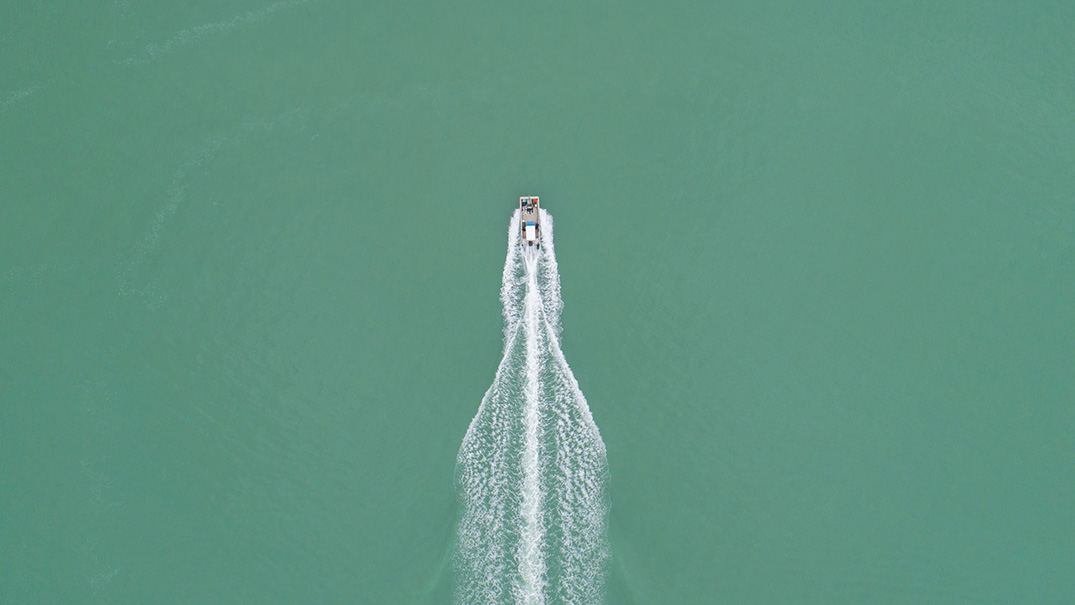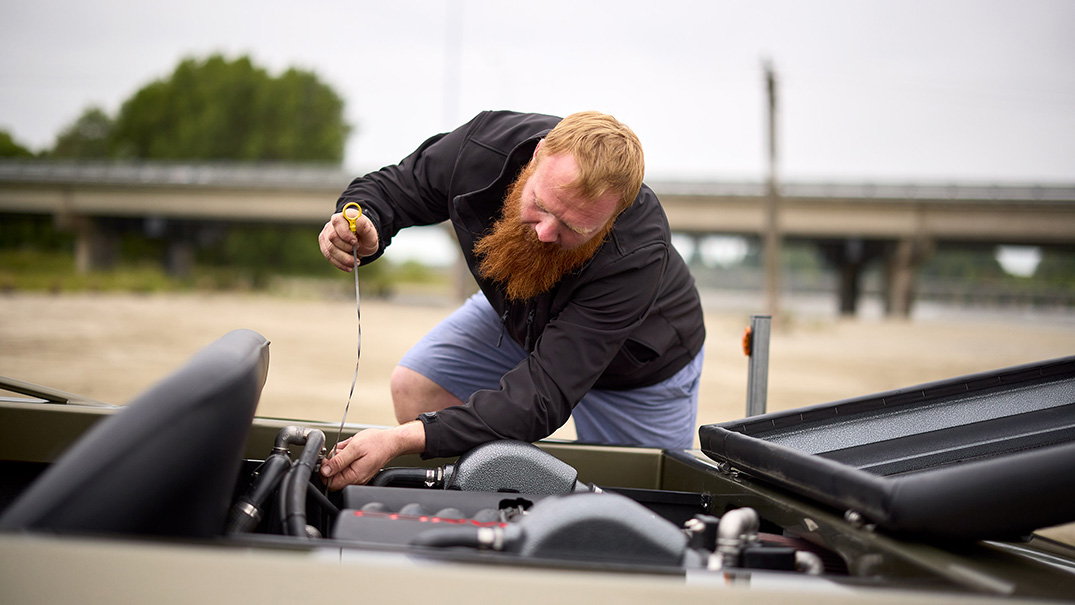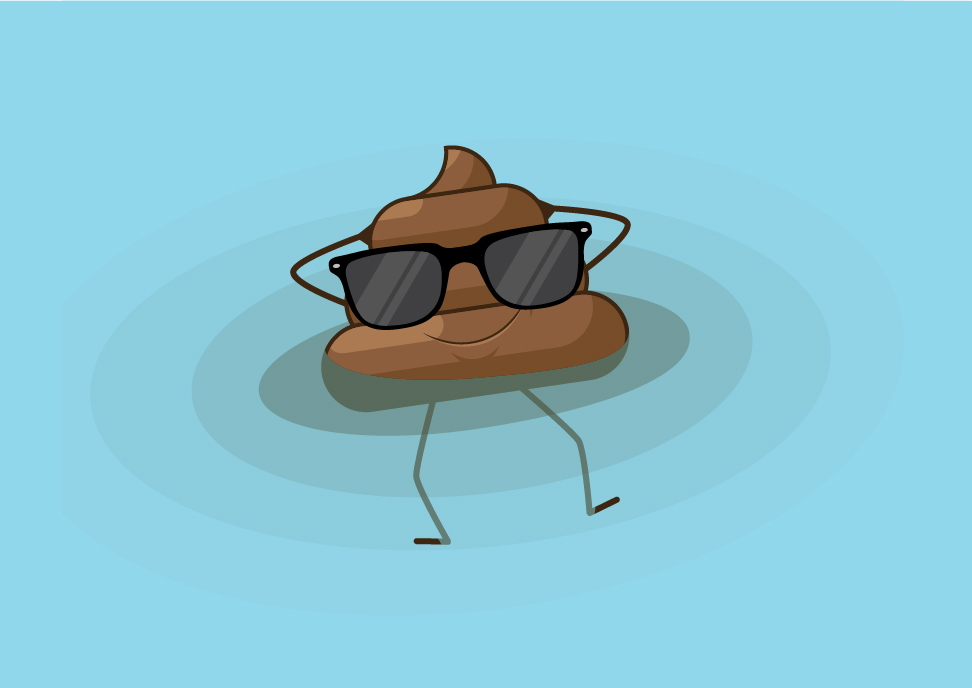Good boat maintenance practices
Good boat maintenance practices, which will help you to protect yourself, other water users and the environment.
These guidelines apply when you are out on the water, on the land and everywhere in between. While the details will change depending on the type of vessel you have and the environment you’re in, the principle remains the same: to keep Waitaha Canterbury waterways and coastal marine areas beautiful now and in the future.
If you need more information, check in with your local club or Maritime New Zealand.
If in doubt, take your rubbish with you for disposal on land and keep all contaminants from reaching the water. If you witness a spill, clean it up as best as possible or call us on 0800 765 588 to report and seek advice, or use the Snap, Send Solve app.
Boat maintenance
At least once a year, get your vessel out of the water to undergo a full warrant of fitness.
- This is a great time to check the hull for any damage, remove unwanted organisms, growth, sand, paint, or biofoul, to make any repairs and to ensure your vessel has clear identification.
- Any work being done should take place far from the water’s edge or stormwater drains to prevent contaminants, such as paint, from spilling and reaching the water.
- Any discharge that arises from this work should be disposed of to trade waste or captured using a drop cloth such as a tarpaulin or similar under the vessel. This can then be disposed of appropriately.
- Large vessels should contact the dry dock for a space.
- It is not advised to complete works such as sanding, grinding and painting on the water as the likelihood of contaminants reaching the water is very high and likely to result in a breach of the Regional Coastal Environment Plan for the Canterbury Region.
Keep your vessel clean and pest-free
Be a good boatie and make sure pests don't catch a ride with you!
Protect Canterbury's beautiful waterways and marine ecosystems by keeping a clean hull. Limiting the fouling on your hull stops pests from catching a ride with you into uncontaminated areas or transferring from your vessel to others when moored or berthed in a marina. Keeping your vessel in good shape will also improve its fuel economy and speed.
Cleaning your vessel
Clean your hull thoroughly — taking shortcuts can make the problem much worse. You must ensure that no contaminants, like marine pests, are discharged into the water during your cleaning process.
- Haul out and remove larger fouling organisms by hand. Don’t throw these back into the water where they can reproduce. Instead, dispose of them in a secure bin.
- Water blast or brush off smaller material at a facility where all wash off is contained and treated. Do this at least annually or when fouling builds up beyond a light slime layer. Pay attention to appendages that protrude or retain water such as the keel, intakes/outlets, propellers and shafts.
- Regularly treat internal seawater systems and flush with freshwater or an approved treatment.
- Other equipment such as trailers, anchors, dive and fishing gear should be washed with freshwater after use, and then thoroughly air dried before using in a new location.
- Always check your boat is clean before you move location.
For the full list of rules see section 7.1 in the Regional Coastal Environment Plan for the Canterbury Region.
Ideally, clean your vessel on land, away from stormwater drains. However, if there is no appropriate place to clean down your vessel, please keep to these simple rules:
- Don’t use any extra chemicals.
- Don’t discharge dirty water into lakes, rivers, or the sea. If it looks dirty, make sure it drains to land.
- Don’t wash any hazardous materials, including fuel, into the water. If some does get onto the ground, please scrape it up and dispose of it appropriately.
Antifouling paints
Antifouling paint cover is the easiest way to keep your vessel clean. However, the ingredients in the paint, such as cooper, can harm marine life. Always apply and remove antifouling paint with careful consideration.
- Antifouling paint generally lasts between one and two years, but always renew the paint at the interval recommended by the manufacturer. Clean and renew any paint that has been scraped or damaged, and always dispose of waste appropriately.
- Antifouling paint works best with more than one coat applied to a clean, dry hull. Allow each coat to dry between applications and allow final coat to cure for 24 hours before re-launching.
- For more information download the Environment Protection Authority's PDF guide to safely using antifouling paints (4.12 MB).
- For guidance on levels of fouling, download this guide from the Cawthron Institute (4.6 MB). Best practice is to maintain fouling levels of 0-1 on the scale.
- Download the guide to safely use antifouling paints (367 KB) produced by the Environmental Protection Authority.
Ballast water
The other way pest species can be transported into, or around, a region is via ballast water. Boaties should apply the Check, Clean, Dry principles as much as possible when taking a vessel out of the water before it is transported or taken to a new environment. The easiest way to do this is to empty the vessel of all water, including any ballast water, prior to leaving the waterway you’re in and then, once on its trailer, flushing it through with clean fresh water and using a treatment as per the Check, Clean, Dry advice. You can then refill the vessel when you enter the new environment.
There are two standards of how to ensure your ballast water is clean:
- Exchanging ballast water in areas outside the influence of coastal and estuarine ecosystems.
- Treatment of ballast water before discharge in order to kill or reduce the number and size of viable organisms or concentrations of pathogens.
For a coastal voyage, ballast water should be exchanged in a similar way to an international voyage.
For a full description of regulations and best practice, please download Maritime New Zealand’s guide to Ballast Water Management (PDF file, 1.71 MB).
More information on freshwater and marine pest management
- The marinepests.nz website also offers tips for keeping boats clean and well maintained.
- Learn more about marine pests and other unwanted organisms in our pest search library.
- Check, Clean, Dry on the Ministry for Primary Industries website
- Watch: How to clean your boat, video produced by the Ministry for Primary Industries
Storing your vessel
Storing your vessel on land
- When storing your vessel on land you need to check if any hazardous materials are leaking or are likely to leak.
- Leaking hazardous materials may cause contamination to land or have the potential to reach a stormwater drain which can enter a waterway or coastal marine area.
- By providing protection in the form of a bund, drip tray, shelter or trade waste system you can protect your boat, the ground below and waterways.
Storing your vessel on the water
- If you are storing your vessel on water (on a mooring, marina or anchorage), ensure it is well secured, with any loose items stowed away.
- A vessel being moored should be seaworthy, meaning in a fit condition to navigate safely on the water, with no inorganic material or hazardous substances being deposited in the water.
Bilge waste
The bilge is the lowest part of the vessel where water, fuel, oil, debris, and other substances tend to collect.
You can discharge clean water to a waterway or the sea, but as soon as it contains contaminants it is considered waste that cannot be discharged onto water or land.
You can discharge your waste by:
- using absorbents to clean up the substances and dispose at an appropriate place.
- using a vacuum system to pump into containers for offshore disposal.
- installing an oil/water separator that captures the hydrocarbons for appropriate disposal.
Hazardous waste vs non-hazardous waste
Hazardous waste has at least one of the following properties:
- explosiveness
- flammability
- a capacity to oxidise
- corrosiveness
- toxicity
- ecotoxicity, with or without bioaccumulation
Waste containing one of these properties needs to be disposed of at an EcoDrop recycling centre or hazardous waste disposal facility. Other waste can be disposed of in the appropriate rubbish bin. If you are unsure, treat it as hazardous.
Sewage from your vessel
Play your part in protecting our waterways, keep untreated boat sewage 1000m away from coastal shores and lakes.
There are three grades of sewage and each have rules around where and what can be discharged in the coastal marine area under the Resource Management (Marine Pollution) Regulations 1998 and the Regional Coastal Environment Plan for the Canterbury Region. No sewage may enter inland lakes and rivers under section 4.12 in the Canterbury Land and Water Regional Plan.
A Grade wastewater
A Grade is the highest quality of treated wastewater, and can be found on big ships. It can be discharged straight into the coastal marine area provided it is 100m away from the coast or a marine farm.
B Grade wastewater
B Grade is a good treatment of wastewater but can only be discharged when 500m away from the coast, a marine farm or mātaitai reserve.
Untreated sewage
Untreated sewage cannot be discharged into the water unless it is a minimum of 1000 metres from shore. For bays and harbours, this measurement must be taken from a line drawn between the heads as per rule 7.7 in the Regional Coastal Environment Plan for the Canterbury Region. This distance may differ from other regional councils; however, we have determined that more protection is needed and increased the area where untreated sewage discharges are prohibited.
Dump stations for disposal can be found throughout New Zealand at certain petrol stations, campsites, and some marinas, or your vessel may have facilities onboard. Alternatively, prior to heading out check where the local public toilets are.
More information on sewage management
- Check the Ministry for the Environment's guide to Sewage Systems for Recreational Boating or the Resource Management (Marine Pollution) Regulations 1998 to see if your vessel meets A or B sewage grades.
- Download the Ministry for the Environment's guide to sewage systems for recreational boating (376 KB).
Refuelling and oil spills
How to mitigate and deal with accidental spills while refueling.
Refuel your trailer vessel at a station prior to heading out on the water.
If that’s not possible or you need to refuel when you are out on the water, some wharfs have a pump on them, or you can carry a canister with you.
When refuelling on the water you need to ensure that you:
- are moored securely and sheltered from unexpected bumps
- have a rag for cleaning up any spills on the vessel
- have a sorbent pad for any accidental spills on the water
- have the correct safety equipment on board such as a fire extinguisher
More information on refuelling and oil spills
- Watch: Refuelling your boat from Safer Boating New Zealand
- Download the New Zealand Marine Oil Spill Readiness and Response Strategy: 2022-2026 (PDF file, 3.9 MB)
If you get into trouble and are unsure of what to do, call us on 0800 765 588. Maritime New Zealand require each regional council to have a dedicated oil spill team and Regional On Scene Commander to minimise the impact of spills on the environment.
Download the Good boat maintenance practices brochure
Report an environmental incident
You can report an incident by calling 0800 765 588 or use the Snap, Send Solve app.



